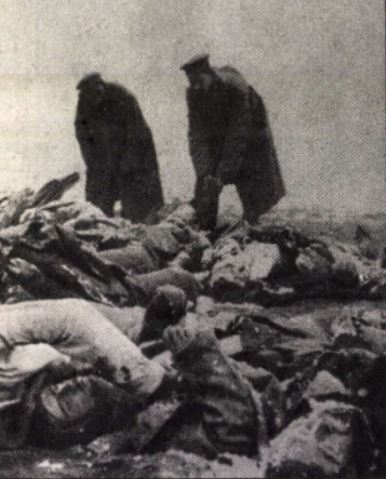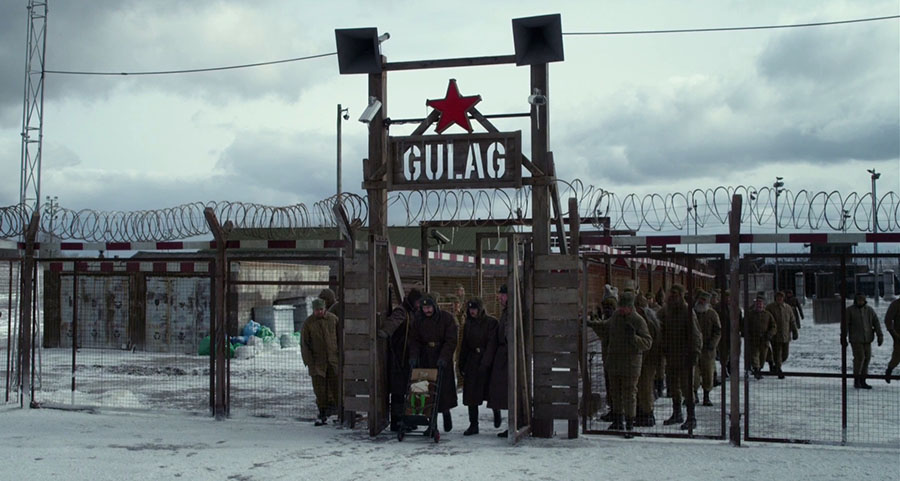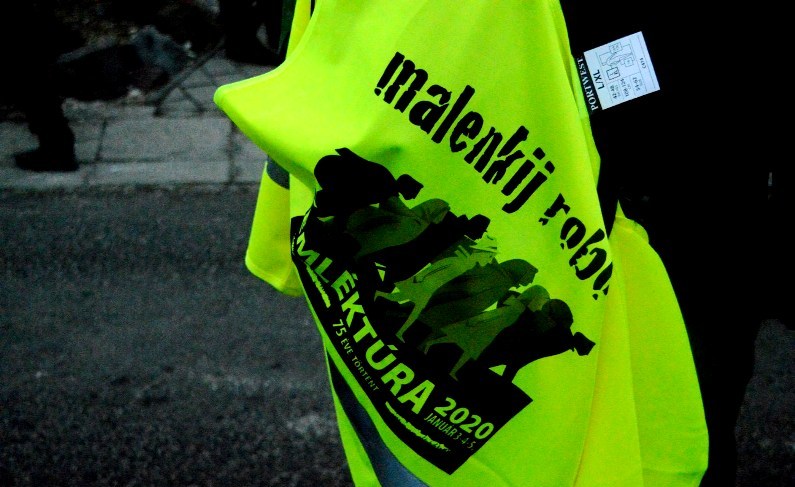The work of the Civil Justice Committee, founded by CÖF-CÖKA, basically involves the presentation of crimes committed during communism that have not yet been investigated and thus remained without consequences. Zsolt Zétényi's study is about the rampage of communist terror and the victims of communists.
The communist genocide in the southern region of 1944–45
In the autumn of 1944, a new military authority, the Military Administration of Bánát, Bácska and Baranya and the OZNA (Odelenje za Zastitu Naroda, i.e. People's Defense Department), was established in Vojvodina on October 17, 1944. After that, on the instructions of the communist party leadership (Yugoslav Népfelszabadító Anti-Fascist Council), they started ethnically based, collective criminal proceedings without a trial. In the winter of 1944-45, the civilian population of Hungarian and German nationality, regardless of age or gender, was tortured and executed en masse in their residences or in concentration camps, accusing them of collective guilt in the Second World War. In many cases, the murders were committed with sadistic cruelty and in a barbaric manner.
According to some estimates, however, the number of Hungarians killed in the winter of 1944-1945 is between 20,000 and 45,000. Enikő Sajti from Szeged places this number at around 5,000 people, supported by reliable data, which is obviously less than the estimated reality. In order to clarify the exact figures, in 2009 the government of Serbia set up a commission of inquiry, and so far they have been able to list 59,554 names in the official database of the victims. Among them, 27,367 Germans, 14,567 Serbs and 6,112 Hungarians were identified based on their nationality until 2014.

image: Arkanum.hu
Hungarian victims of the deprivation of freedom and violent acts of the Soviet communist background during the Second World War and the following years.
Prison camps
GULAG GUPVI
At least 700,000 and at most 750,000-800,000 people (prisoners of war and civilians) who were taken away and deported from Hungary - with the tacit approval of the allied powers - ended up in GULAG or GUPVI camps . during camp captivity.
The GULÁG and GUPVI labor camps not only represented exploitation on a scale unimaginable in history and the cheapest slave labor, but they were also a means of ethnic cleansing, causing mass destruction of innocent people. We must consider every single Hungarian victim as a victim of communism. In any case, those who did not end up as soldiers in a foreign land, and also those soldiers who were prisoners of war, who continued to be held after the conclusion of the peace treaty, and died in such circumstances.
In the series of reparations of the Soviet military power and communist arbitrariness, those executed and deported based on the verdicts of the Soviet military courts deserve a special chapter.
In the operational area and afterwards, until the peace treaty, the Soviet military tribunals operated alongside the individual corps, and then jointly, thus also in the organization of the Third Ukrainian Front, as appeal forums. From the presented prisoner figures, it follows that the number of non-soldiers abducted can be determined between 120,000 and 200,000, excluding those abducted from annexed areas due to lack of data. Together with the latter, we can count on at least 250,000 people. Rózsás János GULÁG LEXIKONA estimates the number of Hungarians who were abducted and imprisoned on political grounds, i.e. presumably convicted, at one hundred thousand. This lexicon itself collects the data of four and a half thousand people, a respectable data collection in itself. To this day, the public is not aware of the fact that, in addition to the huge loss of life in the war, in the final stages of the Second World War and even years after, almost en masse, and then with some selection and in smaller numbers, military trials took place, during which up to a hundred thousand Hungarians could be sentenced as war criminals , thousands to death, tens of thousands to many years of forced labor. According to Rózsás, the number of political convicts is therefore close to one hundred thousand. The Soviet military tribunals justified the sentences with one of the points of Article 58 of the Soviet Penal Code, and they made their rights-depriving decisions with the complete ruthlessness of Bolshevist terror. The arrested Hungarians were inexplicably held responsible as Soviet citizens, thus it became possible that they were treated as traitors.

image: Veritas Historical Research Institute
The Gymrő mass murder
In March-April, the "Gyömrő outlaws" committed murders in and around Gyömrő. About 26 people may have participated in some form in the murders carried out using the most brutal methods, the number of victims was around 23 according to the later prosecutor's investigation. After being brutally tortured, at least twenty-eight people were murdered, according to estimates exceeding the former, ignoring all legal procedures. Almost a hundred victims live in the public consciousness.
During the siege of Budapest at the end of the Second World War, together with the capital city, the settlements of Pest county became prey to the Soviet and Romanian armies. Ferenc Erdei was given the Ministry of Internal Affairs of the Provisional National Government Even before this, the Gymrő "directory" tried to extend its extreme views to the other settlements of the district. "The basic organizations of the MKP, the police bodies, the public administration were formed one after the other - but these organizations were nowhere sharply separated from each other, and nowhere did they serve real public interests. Moreover, they did not follow any central guidelines. In the meantime, they requisitioned, rioted, and terrorized the inhabitants of the villages."
You can read a more detailed story of the murder of the Gymrő chief clerk on the Origo website - ed.)

photo: Gábor Szabó/Origo
In 1948, it was announced "The founding of the Hungarian Republic and the 1848-1849 1948: VI. tc. This provision demonstrated the "spirit of forgiveness" towards those who "offended the legal order for an excusable reason or "to a lesser degree". Zoltán Tildy , living with the authorization, decided on the public pardon on January 31, 1948. It applied to those who - in the case of a specific range of crimes against the people - received a sentence of not more than two years for aiding and abetting, and those who were sentenced to two years before April 4, 1945, or one year before February 1, 1946, in the civil , military, police or excise criminal courts. It extended to those who were prosecuted for their crimes before February 1, 1946, and whose case ended with a sentence of less than five years. Finally, its scope extended to those sentenced to a sentence not exceeding one year between February 1 and August 1, 1946, etc. due to an offense against property.
"However, the most important motive for the clemency provision was the "political" consideration of granting clemency to the so-called perpetrators of popular convictions: all those who committed crimes against the "criminals" of the old regime "under the influence of indignation, or in the belief that they serve the cause of democratic transformation" until August 1, 1946. In this case, everyone received a full amnesty, regardless of the gravity of the act and the amount of the sentence imposed, and regardless of whether the case was judicially closed or not.
In essence, the latter refers to "crimes committed during the democratic transformation of the country" - e.g. the Gymrő, Szentes, Miskolc murders, etc. - the perpetrators were acquitted, and this not only indicates the power's intention to forgive, but also indicates that it was possible to commit a crime and to self-judge on a principled, class-warfare basis. In this case, the amnesty recognized the legitimacy of popular opinions inspired by the MKP. The logic of the pardon was: if the ávós controlled by the MKP and the judges responsible for announcing the appropriate verdicts were allowed to violate the law, then the masses who were forced to do so could not be classified as guilty either. Thus, the act of pardon was not only a pardon, but also part of a series of illegalities, and it clearly served the interests of the MKP".
(to be continued)
Author: lawyer Zsolt Zétényi
(Header photo: Gábor Halupka)













